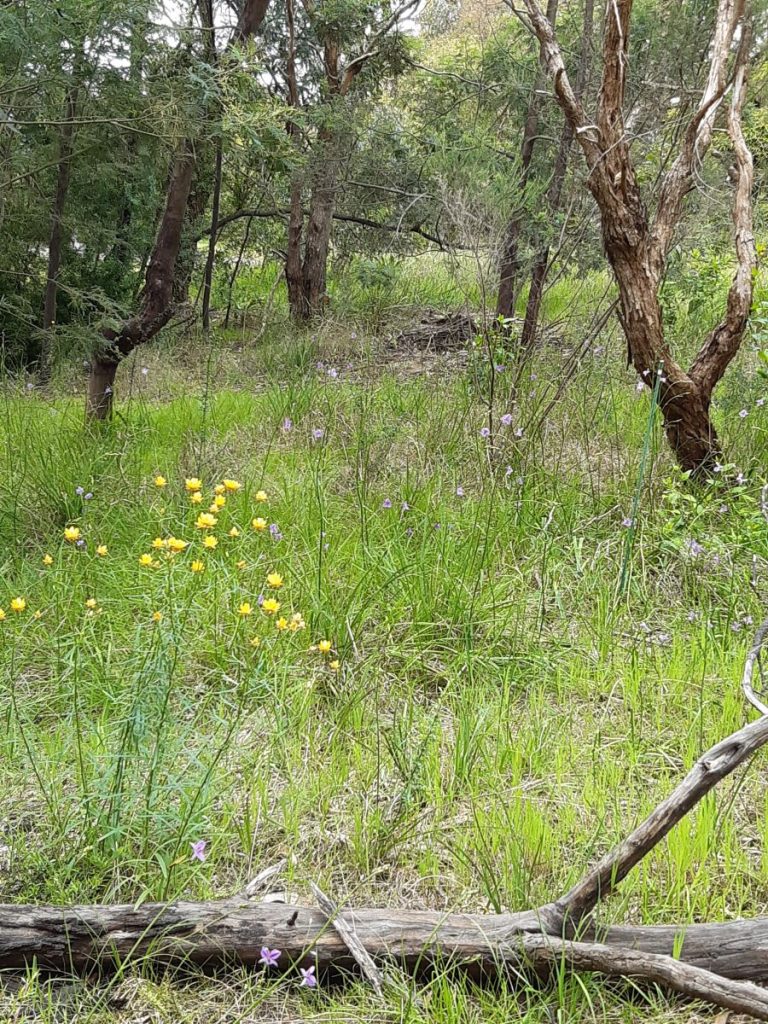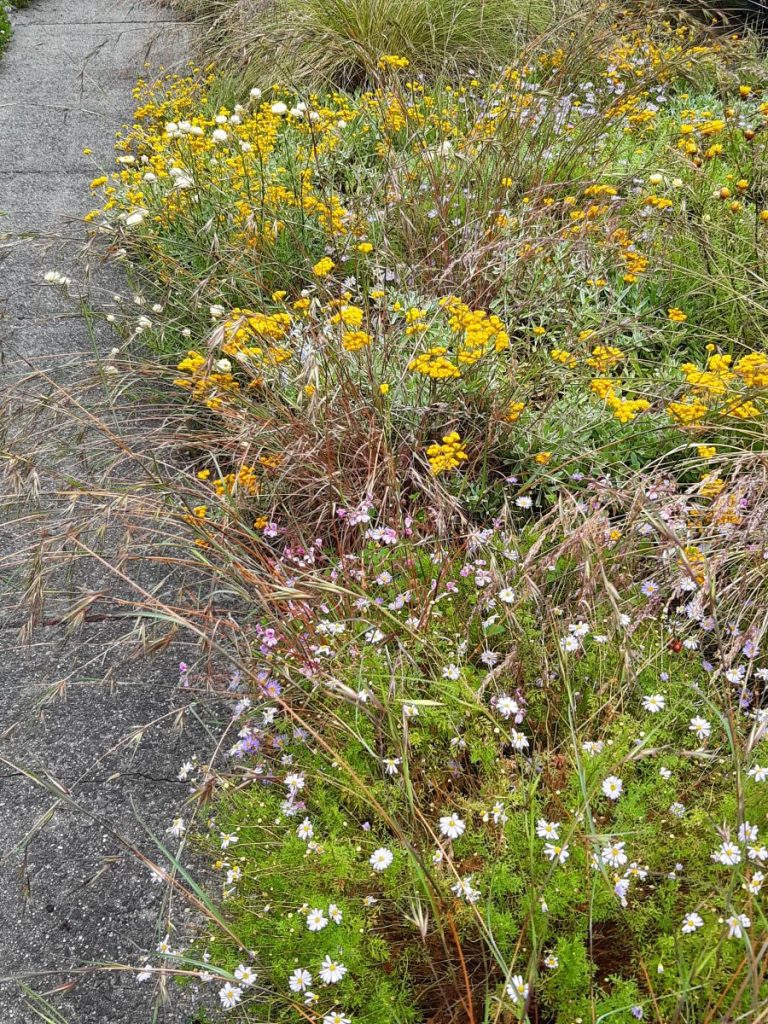A naturestrip is a legally interesting piece of land. It is public land owned by the council with the ‘responsibility’ for its maintenance resting with the home-owner. Councils’ attitudes to home-owner responsibility to maintaining the naturestrip varies from a softly, softly approach, which might talk about ‘expectation’ and doing the right thing by the community, to one of threats, such as the Council will organise mowing the naturestrip and bill you for it.

Not that long ago the municipality I live in threatened to fine its residents $1,000 if they removed the grass and planted out their naturestrips. An interesting threat I thought at the time since there were plenty of examples of the council itself planting out roundabouts and adjoining verges. Considering what the council was doing I couldn’t see how fining residents for the same behaviour would stand up if challenged in a court of law. Needless to say, and unsurprisingly, to the best of my knowledge no-one who ignored the threat was ever issued with a fine.
Over time the council’s attitude to planted naturestrips has done an about face. Would it be going too far to say it is more than sanctioned, it is encouraged! Now the council’s written word is: ‘Nature strips are a vital part of xxx City Council’s streetscape’. Further, council claims, ‘they can significantly improve our local environment and provide habitat for wildlife’.
Understandably the council has rules for planting your nature strip. You need to apply for and submit a permit with accompanying plan to be assessed and approved. This is a safeguard in the advent of a public liability claim. There are also guidelines for planting and maintenance. The guidelines include height restrictions, curb clearance and space for bins to be collected. Before permission is granted for edible plants to be grown a soil contamination report must also be approved. Notably the list of plants provided by my local council are all indigenous. All that is missing is mention of the council’s weed list to further guide your plant choices. I do note, however, some councils provide a link to their weed list asking homeowners to avoid using these plants. As an aside, I have been dismayed in recent years by the spread of gazanias growing out of control along highways and in country towns including naturestrips. I would have thought councils had the authority to demand the removal of these plants, but they would also need to set themselves on a path of weed eradication to set the right example. Gazanias are a declared weed in South Australia but don’t appear to be in Victoria unfortunately.
The idea of planted naturestrips has clearly been embraced more widely with other councils making similar claims about their value. A nearby council states: ‘Planting native wildflowers and ground covers on the naturestrip is a great way to support local diversity and reduce the need to mow. Naturestrips can also look amazing!’ I think it would be fair to say Councils that have adopted a ‘Gardens for Wildlife’ program are more enthusiastic about the idea, including promoting the use of indigenous species to extend wildlife corridors. Before making any changes to the typical grass naturestrip adjacent to your property I suggest you check your Council’s guidelines.
I don’t have a naturestrip as such, but my land adjoins what Council calls a ‘Treed Reserve’. I fondly call it my grassland. I have been weeding this reserve for the past few years after noticing the grasses were being overwhelmed by shaking grass. The area has five different grasses, an abundance of chocolate lilies (Arthropodium strictum) and Lomandra filiformis ssp coriacea and a few other indigenous plants. After I started weeding the beauty of the area started to reveal itself and I was hooked. It’s another job but the learning and rewards are there, including how popular it is with small birds that can use the shrubs in my garden for quick cover. Additionally, it undoubtedly assists by providing host plants for butterflies to breed.
Bev Fox’s nature strip garden, pictured, is in an eastern suburb on clay soils. The plants are mainly a mix of grasses (Poa labillardierei and Themeda triandra) and daisies such as Xerochrysum viscosum, Chrysocephalum apiculatum and Brachyscome multifida. Wouldn’t it be wonderful to see more gardened nature strips softening and transforming streetscapes, adding to a wildlife corridor and turning suburban street walking into something more like to a walk on the wild side?

This article first appeared in the APS Victoria’s journal, Growing Australian, March 2023
